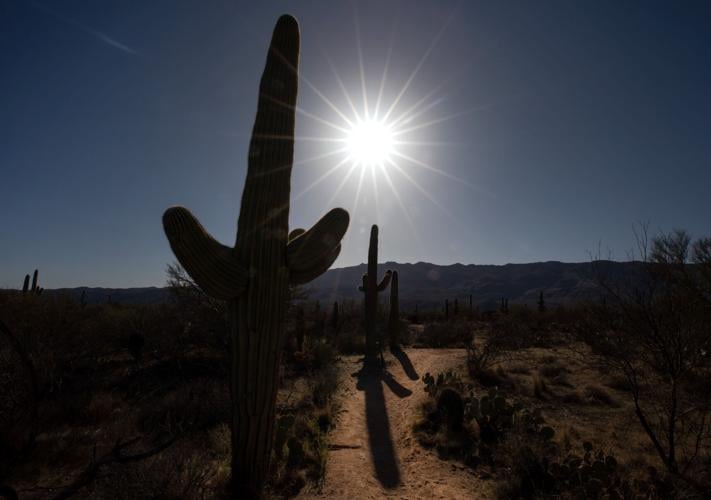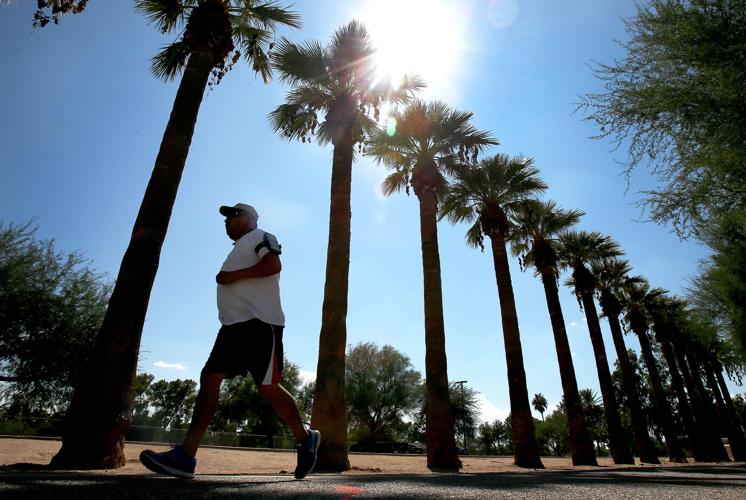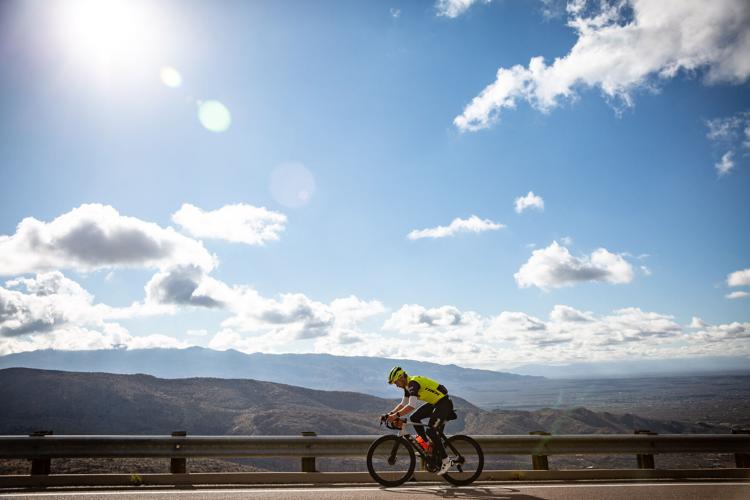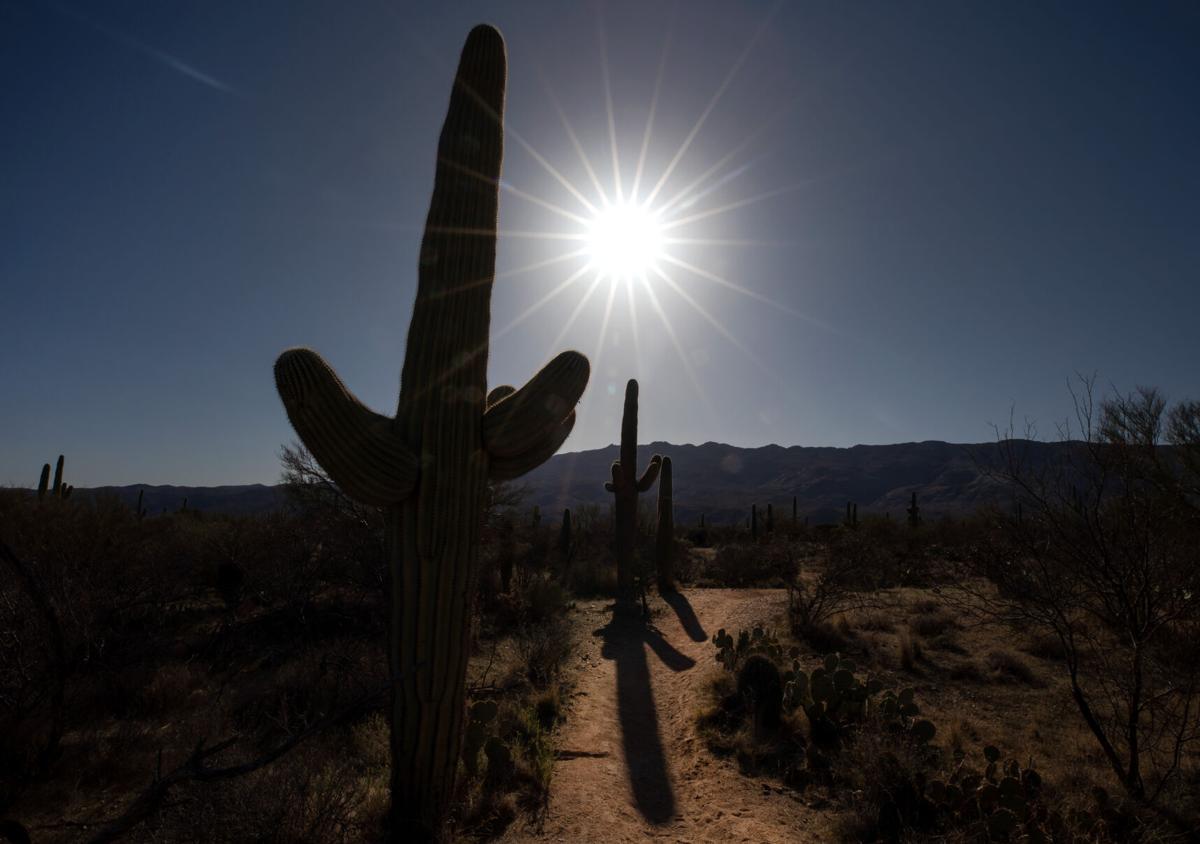Summer is coming. ☀️
While it’s essential to protect your skin in any season, the seemingly relentless Arizona sun takes no mercy on our delicate skin during these upcoming summer months. Since May is Skin Cancer Awareness Month, we’ve created a guide to help your skin stay protected and healthy this summer and beyond.
#ThisIsTucson recently chatted with Lisa Quale, the senior health educator at the University of Arizona Cancer Center’s Skin Cancer Institute, to find out the best ways to protect your skin and the consequences of not protecting it.
“We're getting the word out and teaching people how to be not only sun-safe but to check their skin, because that's the key right there, is if you catch skin cancer early, 90% of the time it is very treatable and very survivable,” Quale says.

Nyyokki Powers, top left, her daughter Anyiah Powers, 9, and their terrier mix Bruno sit in the shade while taking a break from the heat at Udall Dog Park in Morris K. Udall Park and Recreation Center, 7200 E. Tanque Verde Road, in Tucson, Ariz. on May 26, 2020.
Protection and detection are key 🔑
The best way to protect your skin from harmful sun exposure is to follow the A.C.E. plan, according to Quale.
Avoid any unnecessary sun exposure or UV radiation. (Yes, that means tanning beds, too!) And try to stay in the shade when you can.
Cover up any areas that could be exposed to the sun.
Wear “long sleeves, long pants, a (wide brim) hat, sunglasses, but also use sunscreen to cover up any areas you can't cover up with clothes,” Quale says.
The Skin Cancer Foundation says loose-fitting clothing is preferable, and the CDC says if wearing a long-sleeved shirt and long pants “isn't practical, try to wear a T-shirt or a beach cover-up. Clothes made from tightly woven fabric offer the best protection.”
Examine your skin regularly.
“I tell people, once a month is good,” she says. “If you have a day that speaks to you, just check all the skin you have, not just areas that have seen a lot of sun, but you want to check your hands (and) under your nails. Everywhere you have skin, you can get skin cancer. And then certainly if you find something unusual, go to your health-care provider and maybe even a dermatologist who specializes in skin issues.”
But what exactly are you looking for?
Spots that are big or increase in size quickly, have a funny color such as blue, black or purple, and spots or bumps larger than an eraser head or have scalloped or smudged edges, according to Quale.
“Anything unusual, basically what I tell people is, if you find anything on your skin that makes you kind of go, ‘That doesn't look quite right,’ or ‘That doesn't look like everything else that I've got on my skin,’ never hesitate to have it checked,” she says.

Angel Roman, 4, right, gets a direct hit at his brother, Junior, 6, while playing at the splash pad at Catalina Park, 941 N. Fourth Ave. in Tucson, Ariz. on June 14, 2021.
You scream, I scream, we all scream for… sunscreen 🧴
Staying out of the sun is the best way to protect yourself from sun damage that could lead to skin cancers. But, if you have to be in the sun for whatever reason for more than 30 minutes, cover up with proper long-sleeve clothing and a good layer of sunscreen on the places that the sun can still touch with its fiery UV rays.
With so many sunscreens in today’s market, it can be challenging to decide which one is the best for you. Mineral or chemical sunscreen? SPF 30 or SPF 100? What to choose?
Quale says there are three key ingredients to look for in sunscreens: zinc oxide, titanium dioxide or avobenzone. No sunscreen will feature all three ingredients, so look for a sunscreen with at least one.
Zinc oxide and titanium dioxide are minerals that “lay on top of the skin and work to reflect the sun away before it even gets into the other layers of your skin,” she says.
SPF 30 or higher is generally recommended, according to Quale, who says that the difference between the higher SPF levels is that they’re “generally more water-resistant, or they're thicker, or you know, they're maybe a little bit more robust.”
Whether you opt for a lower SPF or a higher one, don’t forget to reapply the product every couple of hours to ensure you’re protected.
“So I am a big fan of just covering up the more skin you can, cover up with clothes or keeping that in the shade, the better off you're going to be because sunscreen has rules and regulations, you know, ways to use it,” Quale says. “And there's user error. But a long-sleeve shirt. That's pretty simple. That's really the way to go for hardcore people who are outside a lot.”

Johnny Salas gets in an afternoon run in the searing 105-degree heat around the multi-use path on Sept. 12, 2017, at Reid Park in Tucson, Ariz.
The consequences of not protecting your skin ☀️
There are no drawbacks to protecting your skin against the sun’s UV rays, according to Quale, but there are plenty of consequences from not protecting it.
For starters, sun damage affects the overall quality of your skin. You can age prematurely and can see wrinkles, freckles, sagging and discoloration before you’d like to and can even develop a “leathery consistency” on your skin, Quale says.
“And if you spend too much time in the sun or exposing yourself to ultraviolet radiation, it can actually start to decrease your immune system,” she says.
However, the most severe consequence is skin cancer.
The three major forms of skin cancer include basal cell carcinoma, squamous cell carcinoma and melanoma. Basal cell carcinoma is the most common form of skin cancer and is primarily caused by sun exposure, according to Quale.
Like basal cell carcinoma, squamous cell carcinoma is primarily caused by UV radiation but can be a little more aggressive. But, if caught early enough, both forms can be treated.
The most aggressive type of skin cancer is melanoma, which Quale describes as “the killer.”
“If you catch it early, like very early, chances are, it's gonna get treated, get cut out, make sure you monitor it for five years or so,” she says. “And things are probably going to turn out well, but if left untreated, it becomes a very life-threatening skin cancer. And while a lot of it is caused by the sun, it's a little bit more mysterious. It has genetic components and it can happen on areas that are not exposed to the sun.”
American Cancer Society estimates that “about 99,780 new melanomas will be diagnosed (about 57,180 in men and 42,600 in women)” in 2022.
And the Skin Cancer Foundation estimates that “more than two people die of skin cancer in the U.S. every hour.”
Regardless of the type of consequences, skin damage is a cumulative issue, according to Quale.
“The damage just builds up over life,” Quale says. “The longer we're on this planet, the more you're exposed to the sun and the more damage it's doing to your skin.”

When you're out in the sun, SPF 30 sunscreen or higher is generally recommended. The higher SPF levels are generally more water-resistant and thicker.
A few more skin protection tips ☂️
Use an umbrella while outside. Whether you’re spending a day at the park or walking to work, use an umbrella for an added layer of protection.
Avoid the tanning beds. Many tanning salons promote tanning beds as a way to get Vitamin D, but Quale says there are better ways to get the vitamin without the harmful UV radiation. Just chat with your doctor!
You’re never too young to start protecting your skin from the sun. While it can be hard to remember to have your kiddos apply sunscreen when playing outside or during recess at school, set them up for success with the proper long-sleeve clothing and a wide brim hat and encourage them to stay in the shade.
“Hopefully, they're (skin cancer statistics) going to start declining because people are becoming more aware and they are taking better care of themselves,” Quale says. “But because it's a cumulative thing, we're still seeing skin cancer that probably started years ago, you know, these people who are protecting themselves now, weren't 10 years ago. And those skin cancers are coming up and out and being treated. So I keep waiting for that year where the skin cancer rates start going down and I feel like we're almost there. Fingers crossed.”
For more information about better ways to protect your skin, and for statistics on skin cancer, visit the UA Cancer Center’s Skin Cancer Institute’s website.









